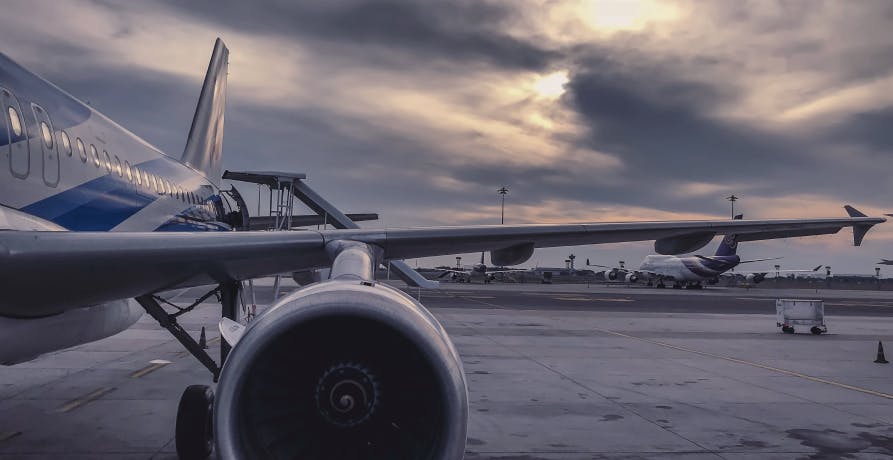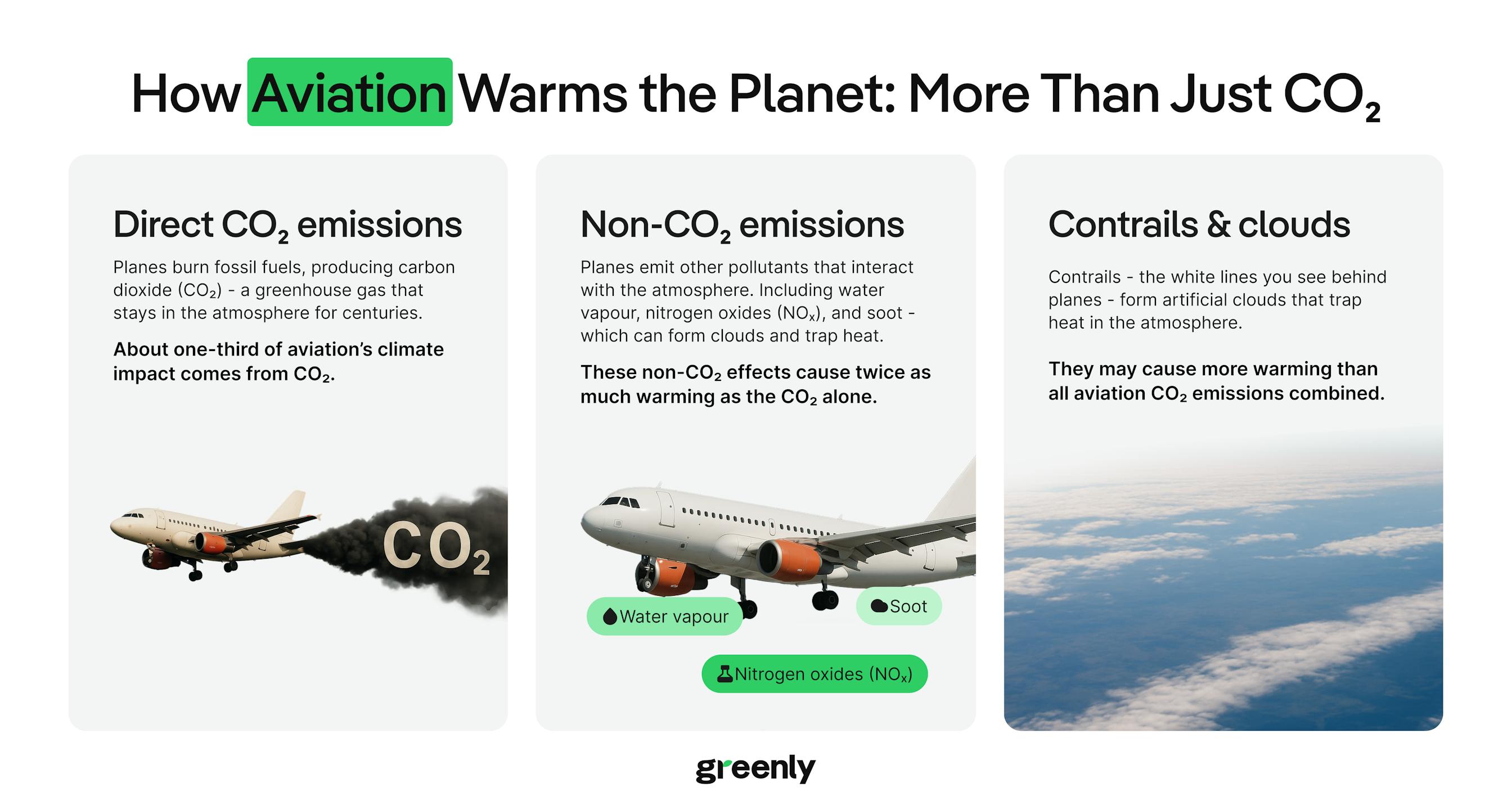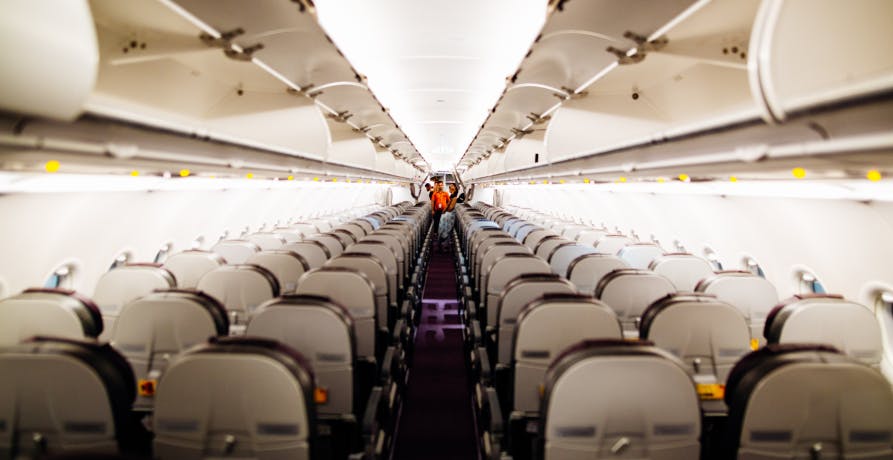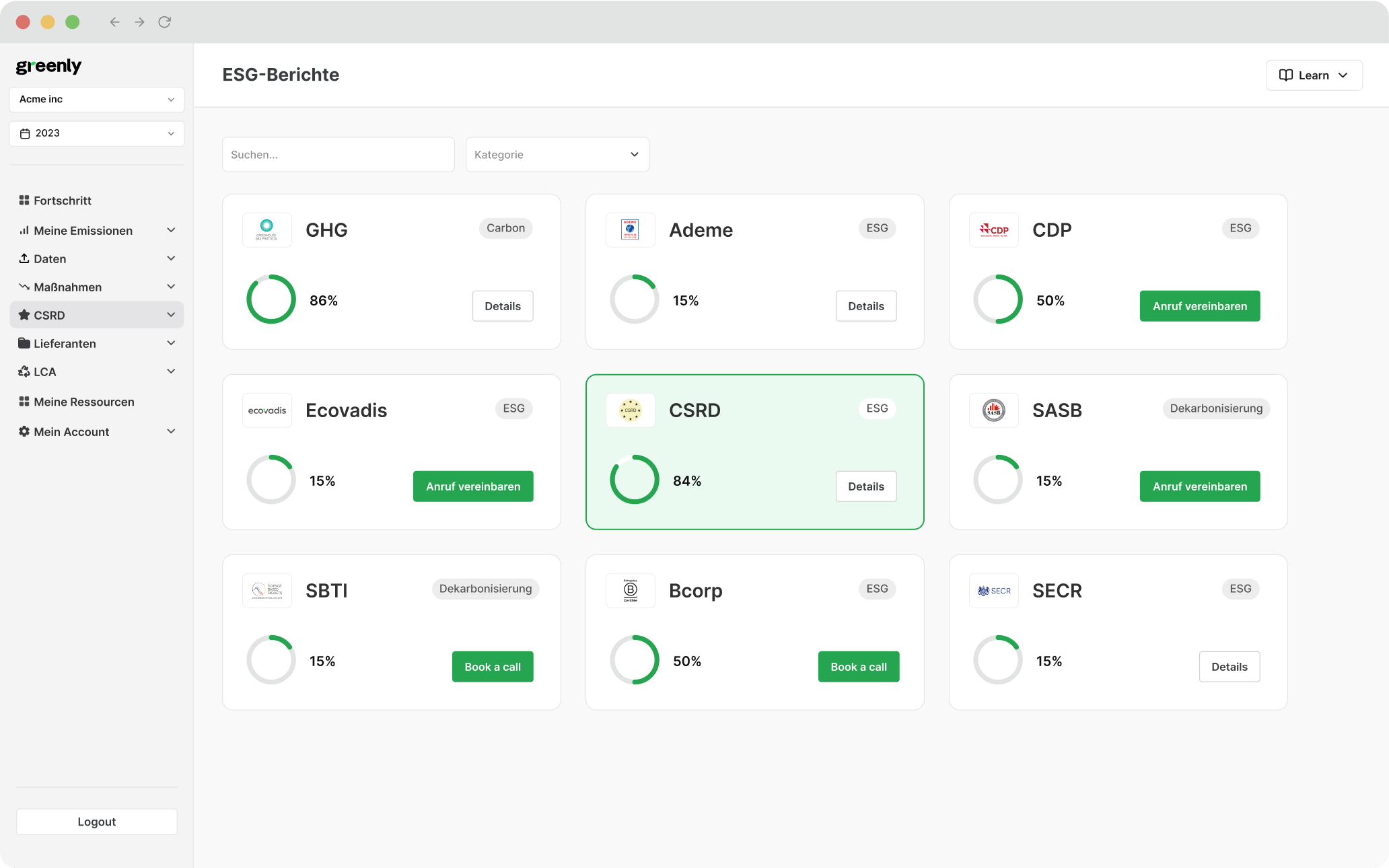ESG / CSR
Industries
Could Aviation Be Decarbonised and Become Sustainable?



Aviation opens up the world. It connects people, powers tourism, and drives global business. But it also comes with a heavy climate cost.
Although air travel accounts for just 2.5% of global CO2 emissions, its overall contribution to global warming is closer to 4% when you factor in other pollutants like contrails and nitrogen oxides. And while planes have become more efficient over time, rising demand is canceling out those gains.
So the question is: can we keep flying without costing the Earth? Can aviation really be decarbonised, and if so, how soon?
- Why aviation is particularly harmful to the environment
- What makes flying different from other forms of transport
- The alternative fuels that could change the game, and their limitations
- What’s being done today to reduce emissions
- What individuals and companies can do to help
The aviation industry and carbon emissions: a quick overview
Compared to road transport, aviation might seem like a minor offender. But appearances can be misleading.
Road vehicles are the biggest contributor to transport-related emissions, accounting for nearly 75% of global transport CO₂ in 2022. In contrast, aviation contributes just 10%. Yet aviation’s emissions are growing faster, and far fewer people fly than drive.
| Transport mode | Share of global transport CO₂ | Emissions trend |
|---|---|---|
|
Road (cars, trucks)
|
~75% | Slowing with EV uptake |
|
Aviation
|
~10% | Rapid growth |
|
Shipping
|
~12% | Moderate growth |
|
Rail
|
~1% | Declining in many areas |
Despite serving a much smaller segment of the population, aviation punches far above its weight in terms of emissions, especially on a per-passenger basis.
So while road transport remains the top emitter overall, it’s aviation that stands out for its emissions inequality, and the growing urgency to rein in its impact.

Why is flying bad for the environment?
Most people know that planes burn fossil fuels and emit carbon dioxide (CO2), but what many don’t realise is that CO2 is just part of aviation’s climate impact.


The full climate impact of flying:
Aviation contributes to global warming in multiple ways:
Why contrails matter
Those white streaks in the sky? They're not just harmless vapour.
Contrails form when hot, moist air from jet engines mixes with cold air at high altitudes. This creates ice crystals that cluster around soot particles, forming linear clouds that can linger for hours. These clouds trap outgoing infrared radiation from the Earth’s surface, effectively acting like a blanket.
Is sustainable flying really possible?
We know aviation is bad for the environment, and with passenger demand rising year on year, the industry’s carbon footprint is only getting bigger. So, where does that leave us? Can we still fly in a way that aligns with climate goals?
Many people hope that technological innovation will deliver guilt-free flying. But how realistic is that hope?
To decarbonise aviation, we need to transition away from fossil-based jet fuel and adopt sustainable aviation fuels (SAFs) that emit fewer greenhouse gases. But this is easier said than done.
The aviation sector faces unique challenges:
A recent Royal Society review of alternative jet fuels - including hydrogen, ammonia, synthetic fuels, and biofuels - found that while each holds promise, none are currently ready to replace conventional jet fuel at scale.
So, what are these alternatives, and what’s stopping them from taking off?
Let’s take a closer look at the leading options for sustainable aviation fuel and the roadblocks they face.
Hydrogen
Hydrogen is widely seen as the most promising candidate to decarbonise aviation. It burns cleanly and has the potential to cut the climate impact of flying by as much as 50–75%. However, using hydrogen as jet fuel would require major changes to aircraft design and fuel storage, as well as investment into new infrastructure across airports.
Airbus is leading the way with its ZEROe programme and aims to launch the world’s first hydrogen-powered commercial aircraft by 2035. Yet even this target is seen as ambitious, and most analysts expect commercial readiness to lag behind that timeline, particularly for long-haul flights.

Ammonia
Ammonia is emerging as a promising hydrogen-based fuel for aviation. Already widely produced (mainly for fertiliser), ammonia has around 49% more energy per litre than liquid hydrogen, making it easier to transport and store. If synthesised using renewable energy and green hydrogen, it can offer a carbon-free alternative to kerosene.
It also has an edge when it comes to climate impact. Unlike kerosene and even hydrogen, ammonia combustion doesn’t produce soot, which means it could significantly reduce contrail formation — one of the biggest non-CO2 drivers of aviation-induced warming.
But challenges remain. Ammonia is toxic and corrosive, requiring strict safety measures and new handling infrastructure. And while it avoids CO2, it can still generate nitrogen oxides (NOₓ), meaning it’s not a perfect solution. Retrofitting aircraft for ammonia combustion is still in the very early stages, and experts place commercialisation around ten years behind hydrogen.
Synthetic (drop-in) Fuels
These fuels are made by combining hydrogen (typically from water electrolysis) with captured carbon dioxide, using renewable energy. When both the hydrogen is produced from green electricity and the CO2 is captured directly from the atmosphere, the fuel has the potential to be close to carbon neutral. However, the technology to capture and reuse atmospheric CO₂ at scale is still in its early stages, and will require major advancements in efficiency and cost to become widespread.
Synthetic fuels also come with major trade-offs. Producing them is energy-intensive and expensive (often up to eight times the cost of conventional kerosene). And current blending limits only allow 50% synthetic fuel in most commercial flights, limiting their benefits.
Despite this, synthetic fuels are currently the most scalable low-carbon option available, and many airlines are already investing in production facilities and long-term procurement agreements.

Biofuels
Biofuels, often derived from crops or waste products, are already being blended in small amounts with conventional jet fuel. Heathrow, for example, is currently the largest user of aviation biofuels globally, though they still account for less than 1% of its total fuel use.
While biofuels are technically compatible with existing aircraft and fueling infrastructure, scaling their use presents major environmental and logistical challenges. First-generation biofuels, made from food crops like corn or soy, can drive deforestation, increase food prices, and compete with land needed for agriculture or biodiversity.
Even second-generation biofuels, produced from waste or non-food biomass, face scalability issues. According to Carbon Brief, if the UK aviation industry were to run entirely on biofuels, it’s estimated that up to 50% of all UK farmland would need to be dedicated to fuel production - a trade-off that raises serious sustainability questions.
What’s next for sustainable aviation?
But while a perfect solution doesn’t yet exist, momentum is building.
- Hydrogen-powered aircraft in development (e.g. Airbus ZEROe)
- Airlines signing long-term synthetic fuel deals
- Airports investing in hydrogen-ready infrastructure
- Electric aircraft trials for short-haul flights
- ReFuelEU Aviation: 70% SAF blending target by 2050
- Tax credits and SAF subsidies in US & UK
- Increased investor confidence in SAF projects
- Synthetic and biofuels are "drop-in" compatible
- No redesign of aircraft required
- Challenges: high costs, scalability, land use
- Most viable way to cut emissions now
A long-haul transition
Looking further ahead, the path to sustainable aviation is likely to be a mix of solutions:
Each of these technologies has a role to play, but scaling them will take time, investment, and political will.
The sky isn't the limit
The transition won’t happen overnight. But thanks to rising climate pressure, growing investment, and rapidly evolving technology, sustainable aviation is finally starting to take off.
The future of flight may not be fully green yet, but it’s no longer grounded!
What can we do in the meantime?
While the aviation sector works toward long-term decarbonisation, the reality is that most of us will still need to fly, whether for work, family, or pleasure. But that doesn’t mean we’re powerless in the face of aviation’s climate impact. Until cleaner fuels and new aircraft technologies scale up, individuals and businesses can take meaningful steps to reduce the footprint of flying today.
Here are a few practical, low-carbon actions we can take:
| Action | Why it matters |
|---|---|
|
Take the train (or bus)
|
Short-haul flights are the most carbon-intensive form of travel. Trains emit far less – for example, a Paris–London Eurostar trip emits ~80% less CO₂ than flying. |
|
Fly economy instead of business
|
Business class takes up more space and resources, making it up to three times more carbon-intensive than economy class. |
|
Offset your flight emissions
|
Offsets support climate projects like reforestation or renewable energy. They’re helpful, but not a true substitute for cutting emissions at the source. |
|
Choose virtual meetings
|
Many work trips can be replaced with a video call — saving money and cutting emissions instantly. Physical presence is rarely essential. |
Even small changes can help lower your travel footprint, and collectively, they send a strong signal to airlines, governments, and innovators that cleaner aviation needs to be a priority.
What about Greenly?
At Greenly, we help businesses turn climate ambition into action. Our sustainability suite is designed to make emissions tracking, reduction, and reporting both simple and impactful – no matter your sector or starting point.
- Carbon footprint assessments We calculate your full Scope 1, 2, and 3 emissions using verified data and the latest methodologies – giving you a clear view of your climate impact.
- Emission reduction strategies From supply chain improvements to smarter energy use, we help identify tailored actions to reduce your carbon footprint and future-proof your operations.
- Regulatory compliance Whether you’re navigating CSRD, SECR, or other reporting requirements, we provide clear guidance and automated tools to help you stay ahead.
- Life Cycle Assessment (LCA) Want to understand the environmental impact of your products? Our LCAs break it down – from raw material to end of life.
Greenly makes sustainability measurable, manageable – and meaningful. Get in touch today to find out more.





